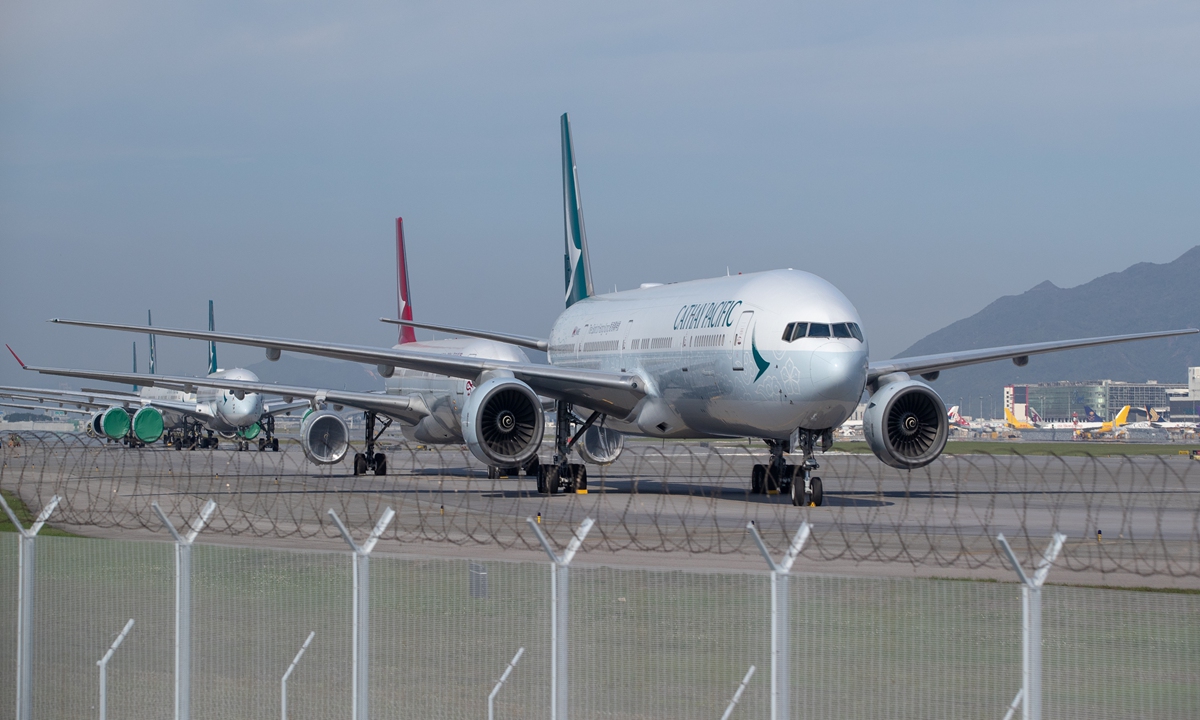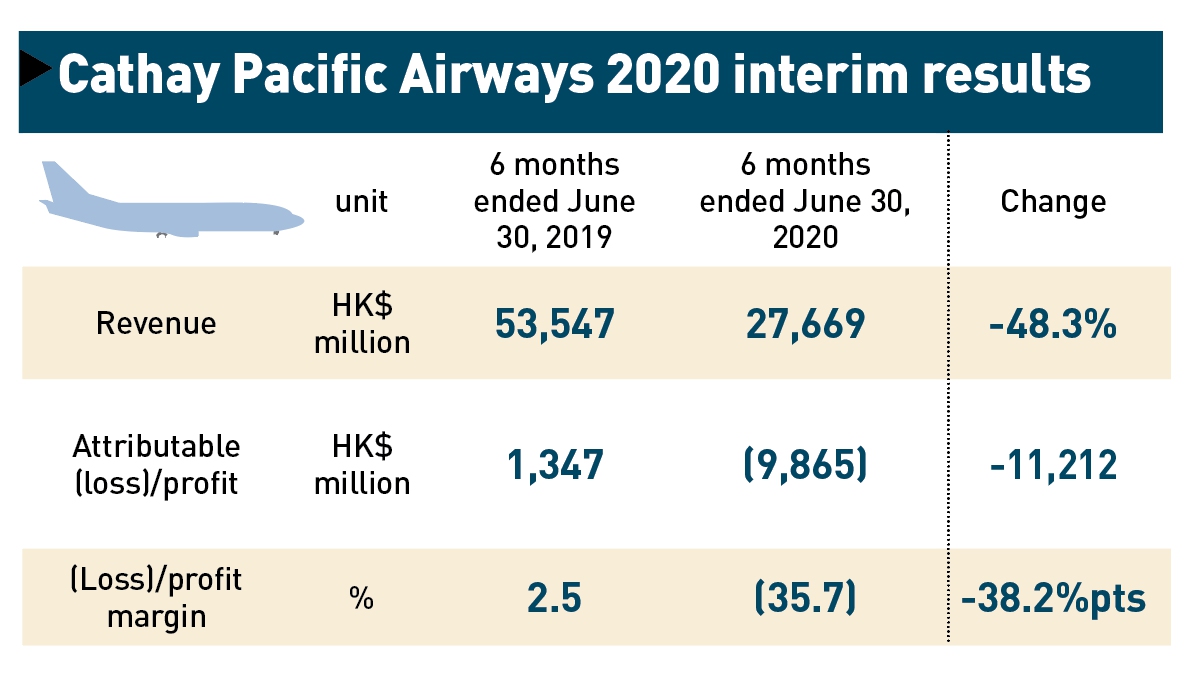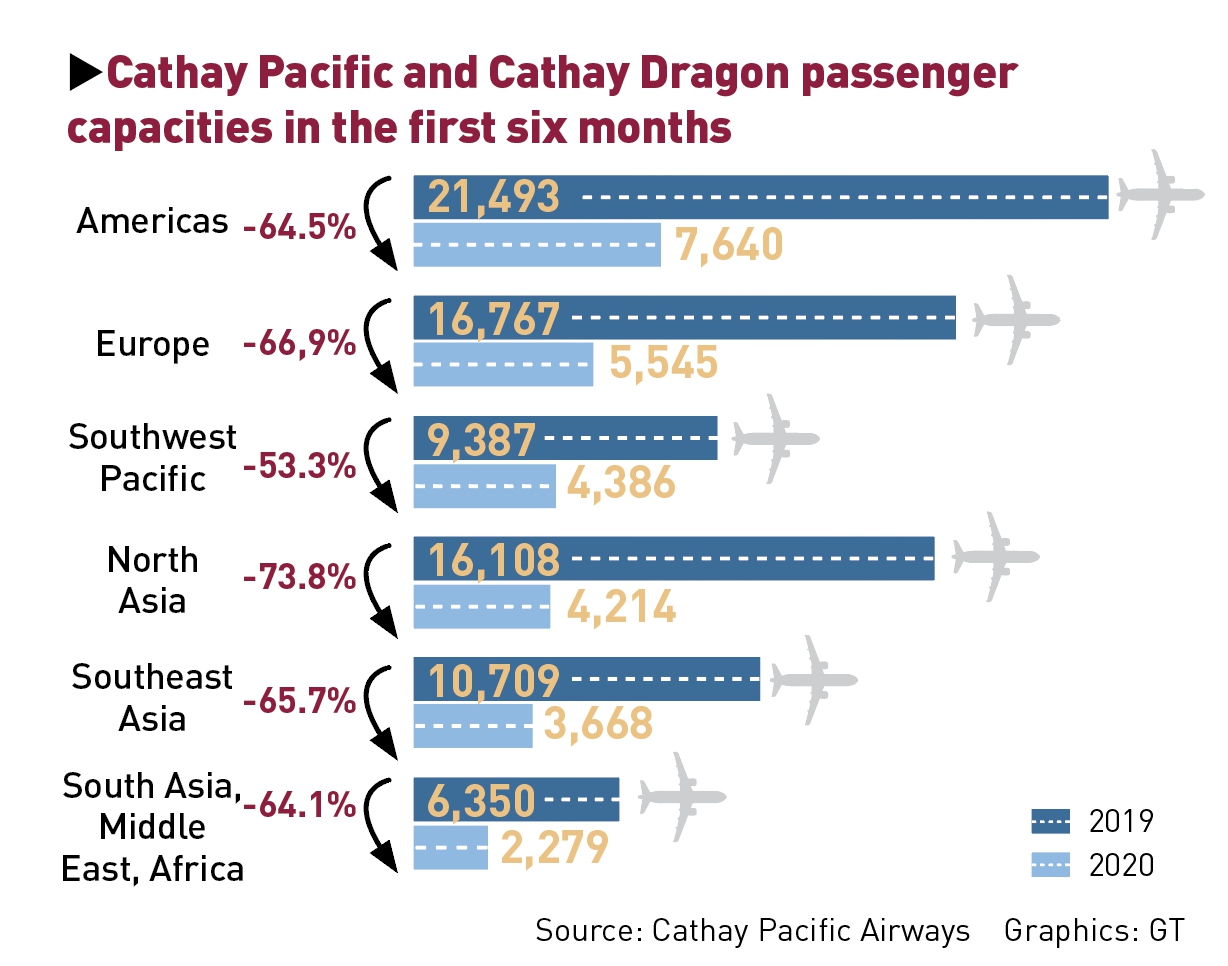Cathay Pacific reports bleak H1 performance
By Tu Lei Source: Global Times Published: 2020/8/13 18:33:41

Cathay Pacific aircraft line up on the tarmac at the Hong Kong International Airport on April 30 as airlines across the globe have cancelled flights and postponed or adjusted services in response to the COVID-19 pandemic. Photo: AFP
Despite a promising start in January, with encouraging signs that passengers were beginning to return following Hong Kong's social unrest in the second half of 2019, Cathay Pacific Group is now facing the most severe challenge in its more than 70-year history.Cathay Pacific Group said on Wednesday that its attributable loss was HK$9.87 billion ($1.27 billion) in the first half of 2020, compared with a profit of HK$1.3 billion in the same period the previous year. Both Cathay Pacific and Cathay Dragon reported after-tax losses of HK$7.3 billion in the first half of 2020, down from profits of HK$675 million in the first half of 2019.
Patrick Healy, chairman of the group, said the impact of COVID-19 on its business and the global economy is unprecedented, the global health crisis has decimated the travel industry and the future remains highly uncertain. Most analysts suggest it will take years for the aviation industry to recover to pre-crisis levels.
After its first loss in 2016, Cathay Pacific launched a three-year corporate transformation plan which included cutting 600 employees and the reorganization of its headquarters team, attracting significant external attention.
In July 2019, Cathay Pacific announced it had acquired low-cost airline Hong Kong Express and expanded its aviation network.

Declining demand
Since mid-2019, the demand for passenger transport in Hong Kong has declined rapidly, and an already difficult operating environment has worsened with the outbreak of COVID-19.
Passenger revenues decreased by 72.2 percent to HK$10.3 billion in the first half of 2020. In total, the group carried 4.4 million passengers in the first six months of the year, 76 percent fewer than in 2019. The load factor also dropped significantly, down to 67.3 percent from 84.2 percent in the first half of 2019. In April and May, the group carried an average of just 500 passengers a day.
Recovery prospects grim
The Hong Kong aviation market, which depends on international flights, is unlikely to recover amid the global downturn, Lin Zhijie, a market watcher from Aviation Think Tank under the Civil Aviation Administration of China, told the Global Times on Wednesday.
He explained that aviation sectors in Hong Kong and the Chinese mainland are completely different, as the mainland aviation industry has the support of domestic travelers.
Although the pandemic situation remains serious, the domestic market has recovered to 80 to 90 percent of its level pre-outbreak. As the coronavirus continues to spread around the world, international flights to Hong Kong are still being impacted, and "there is no room for the group to turn around," Lin said.
Hong Kong's local aviation market has also been dragged down by a third wave of the virus in the city.
Hong Kong reported 38 new COVID-19 cases on July 10, including 32 locally transmitted infections, after the city reported 42 cases the previous day, the highest number in a single day that week.
Hong Kong Chief Executive Carrie Lam announced a further tightening of prevention and control measures, including gathering restrictions and business suspension orders. Any further escalation of the virus situation will likely hit the catering, retail and aviation industries.
Airport Authority Hong Kong said that passenger traffic declined by 99 percent year-on-year in June, and aircraft takeoffs and landings by 71.8 percent.

Transfer services resuming
Since June 15, Hong Kong has been gradually resuming its transfer and transit services.
Passengers departing from the Chinese mainland will be able to transfer at Hong Kong International Airport from August 15 to October 15, while transfer and transit services for those traveling to destinations in the Chinese mainland will remain unavailable, said Airport Authority Hong Kong on Thursday.
Cathay Pacific said in a note sent to the Global Times that it has resumed services between Beijing, Shanghai, Chengdu, Xiamen and Hong Kong, as well as other major destinations around the world.
Newspaper headline: Losses mount for Hong Kong aviation
Posted in: COMPANIES